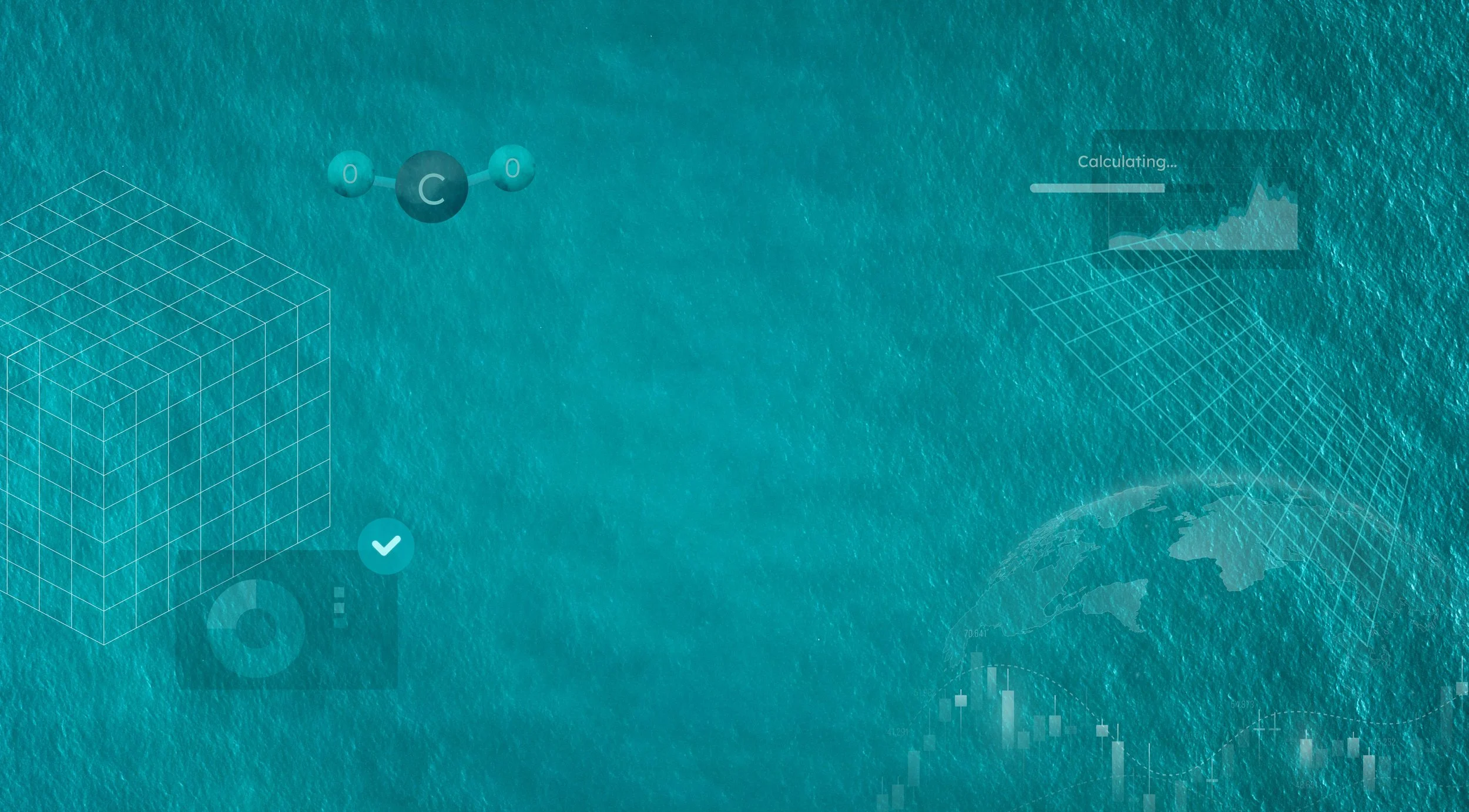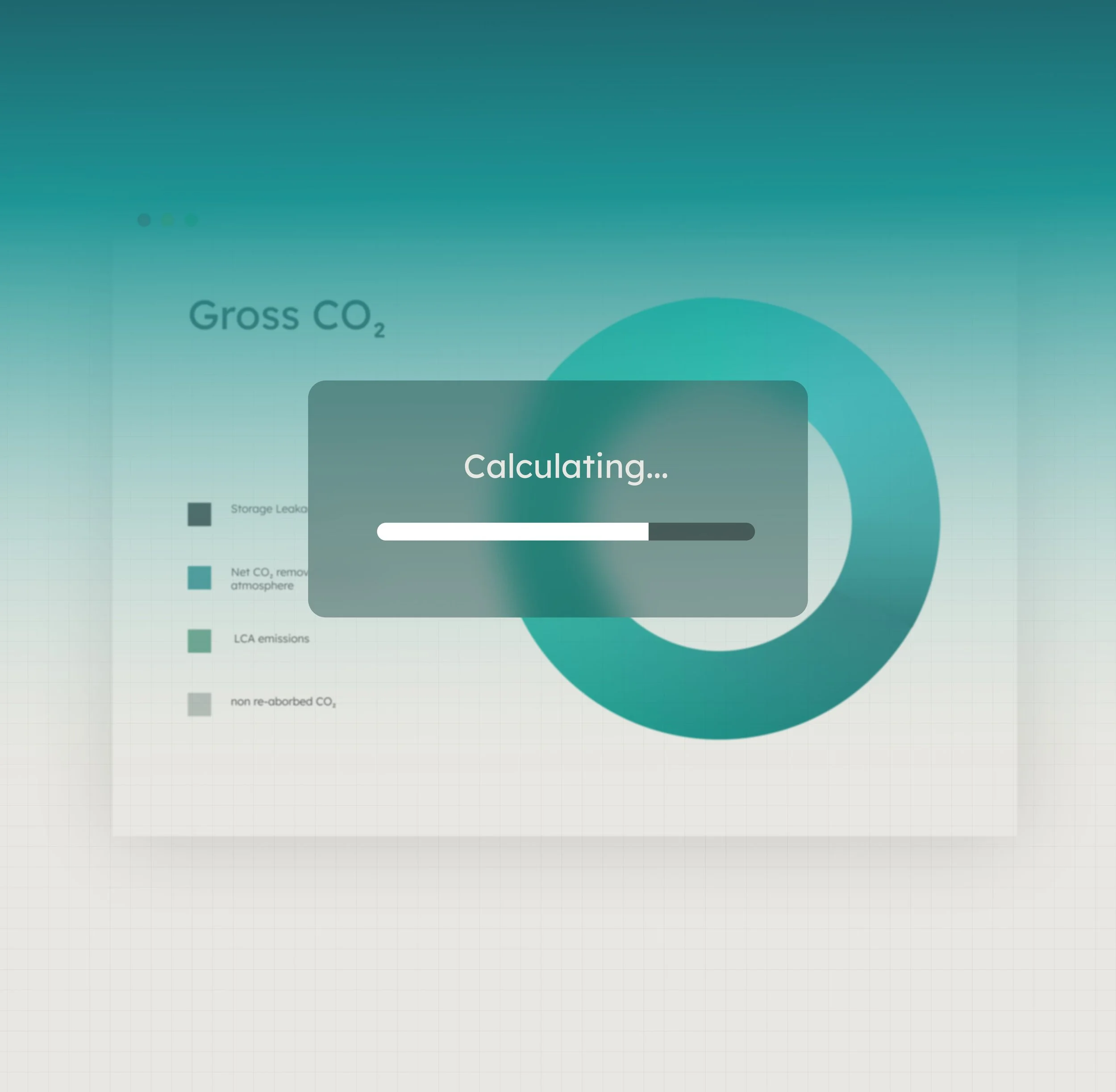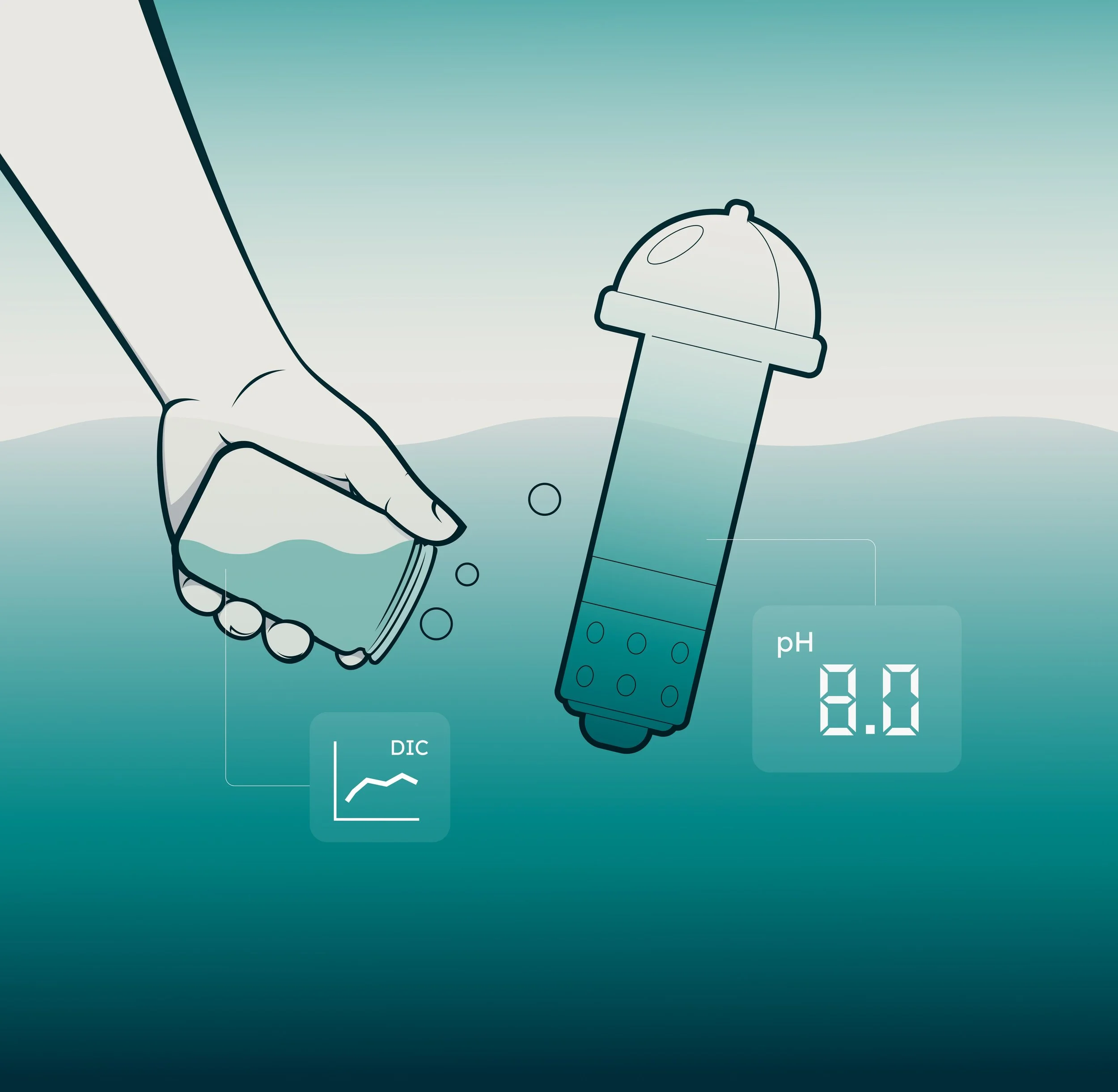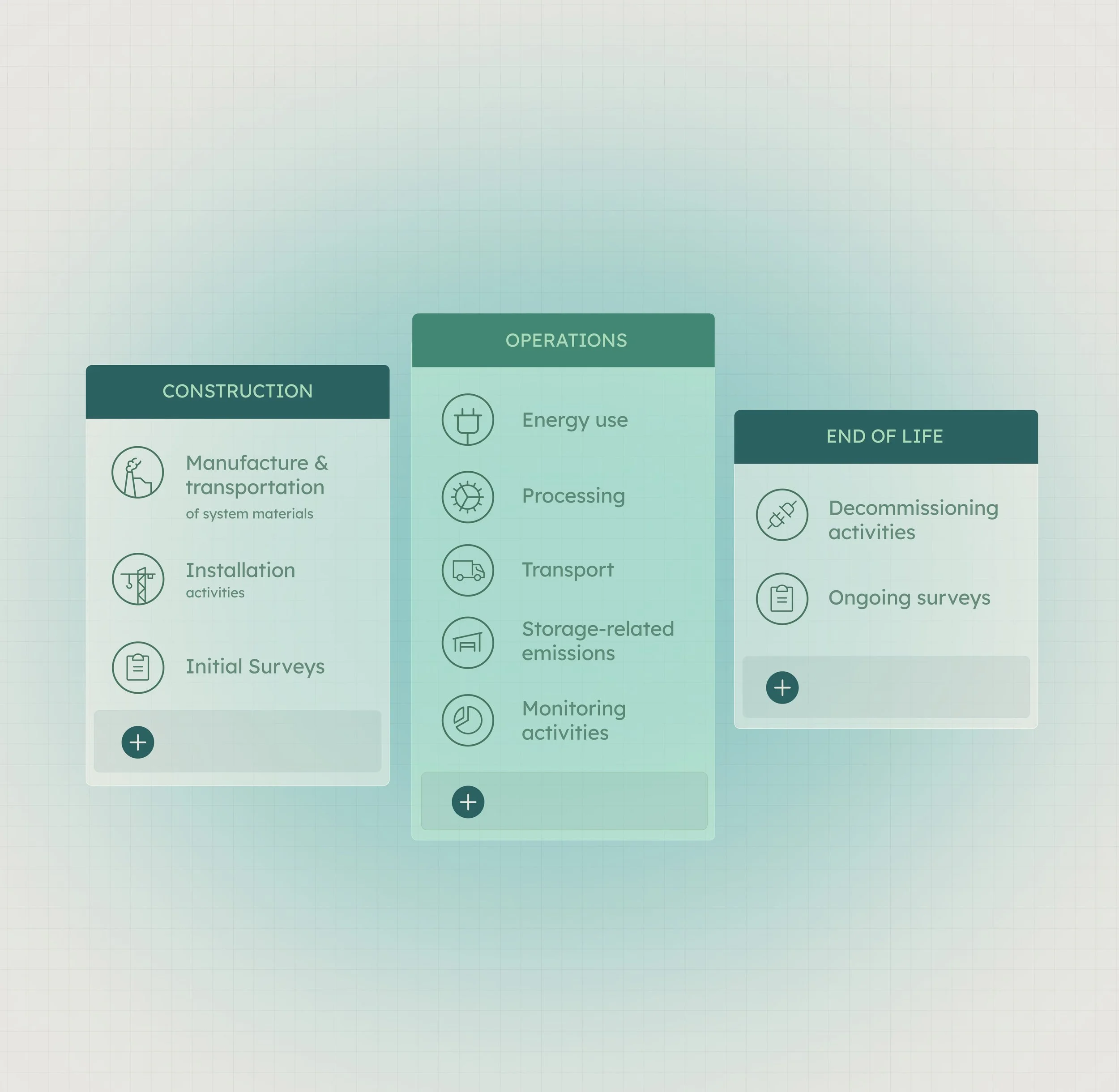
MRV
Monitoring, Reporting & Verification (MRV) of Carbon Removals
What is MRV?
Accurate monitoring, reporting & verification (MRV) is important for ensuring proper quantification of net CO₂ removals from the atmosphere, which is at the heart of our mission. Here we globally explain our approach to MRV for our future carbon removal projects, and how we ensure that each carbon credit that is issued constitutes at least one tonne of CO₂ removed from the atmosphere. Credited projects will additionally follow detailed MRV protocols from carbon credit registries, with removals being verified by an independent Validation and Verification Body (VVB).
How we determine net removals
SeaO₂’s process captures a gaseous stream of CO₂ extracted from seawater. This creates space for the ocean to re-absorb CO₂ from the atmosphere. To determine the net amount of CO₂ removed from the atmosphere, we quantify how much CO₂ the ocean reabsorbs, and how much CO₂ is emitted during the life cycle of a project. We factor in conservative risks of stored CO₂ being re-emitted through unforeseen leakage.
What and where do we measure?
We measure several parameters that are important for determining gross removals of CO₂ in seawater. This includes continuous direct measurements of the removed amount of CO₂ from seawater, as well as sensor- and sample-based measurements of the seawater CO₂-chemistry at the points of water intake and discharge. We also measure seawater chemistry in the environment near project sites, to understand how the decarbonized seawater dilutes and spreads in the environment. Relevant parameters include pH and pCO₂, which can be measured using sensors, and dissolved inorganic carbon (DIC) and total alkalinity, which can be determined in the lab.
Next to parameters that directly relate to the carbonate system in seawater, we also monitor important environmental parameters such as dissolved oxygen, turbidity and chlorophyll, in order to safeguard water quality and ocean health. Monitoring of the water quality starts well before the operations phase of a project, so that we have a well-defined baseline. This provides information about how different measurements naturally vary, without our process.
Determining atmospheric removals
The decarbonized seawater we release rapidly dilutes and naturally reabsorbs atmospheric CO₂ over weeks to years, depending on environmental conditions. The strong dilution of decarbonized seawater in the environment makes it increasingly more difficult with distance to directly measure the influence of our CO2 stripping in seawater. To address this, we use ocean model simulations to track the spreading of the decarbonized water plume, to estimate CO₂ reabsorption, and to compare outcomes with the counterfactual - what would happen without our process. We discount for model uncertainties and follow strict protocols from carbon removal registries. This modeling work is done in collaboration with expert third-parties. These models use real-world data from our project sites, and are validated using observational data. This enables a robust estimate of CO₂ removed from the atmosphere.
Life cycle analysis (LCA)
There will be some greenhouse gas emissions related to our carbon removal projects, for example during the production and shipping of components, during operations, or related to transport and travel. We track project-related emissions using a life cycle analysis. These emissions will influence how much net CO₂ our projects capture from the atmosphere.
Storage & durability
It is important that the CO₂ that we capture is permanently removed from the atmosphere, so we work with third parties that durably store captured CO₂ at geological timescales (thousands of years). We exclusively work with storage partners who also have rigorous MRV protocols. Conservative risk accounting for potential leakage of removed CO₂ will be reported to SeaO₂ and is taken into account for determining our net removals.
Questions about MRV?
We are currently working on an MRV framework document that describes our MRV process in more detail. Questions can be addressed to mrv@seao2.com.






